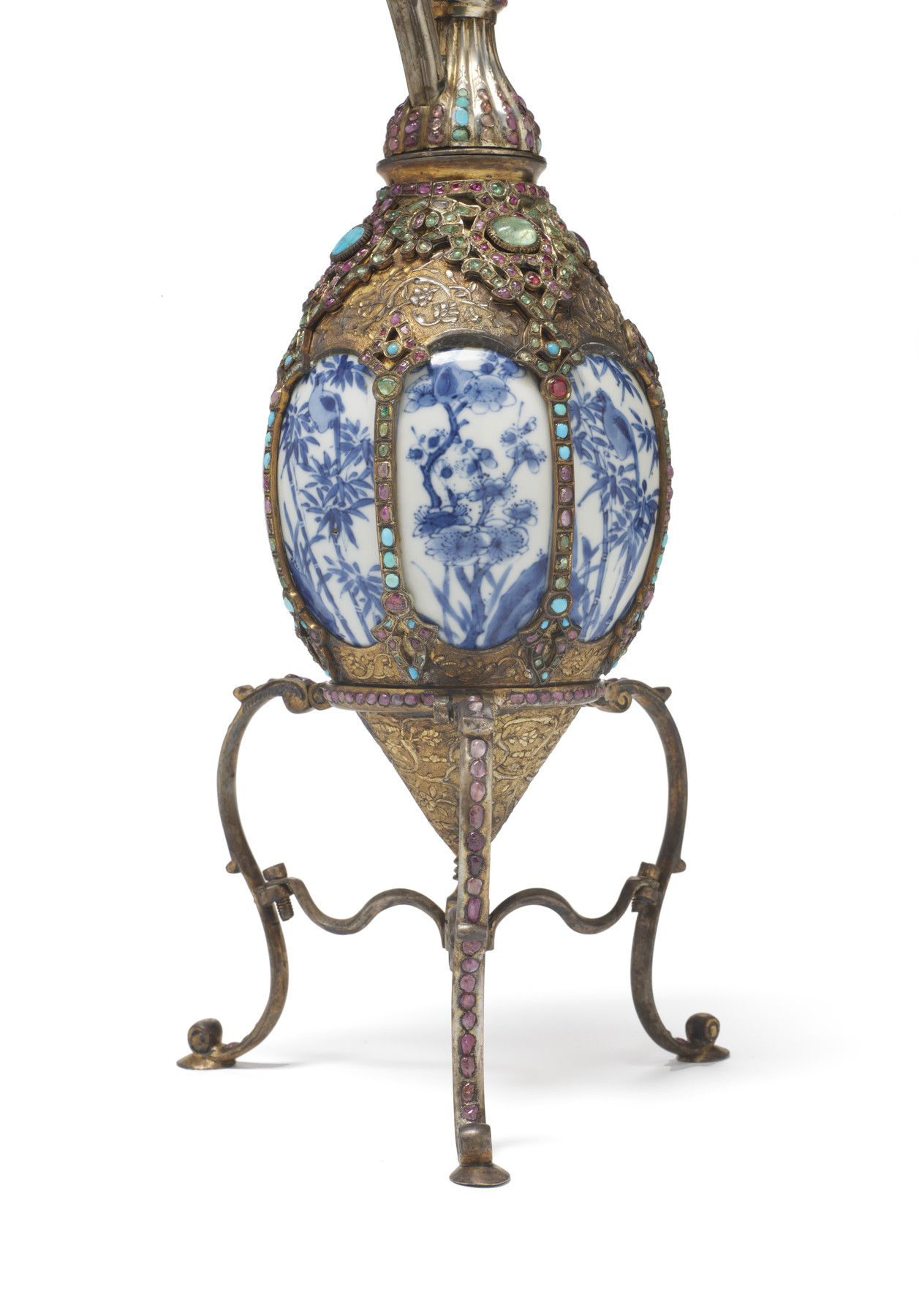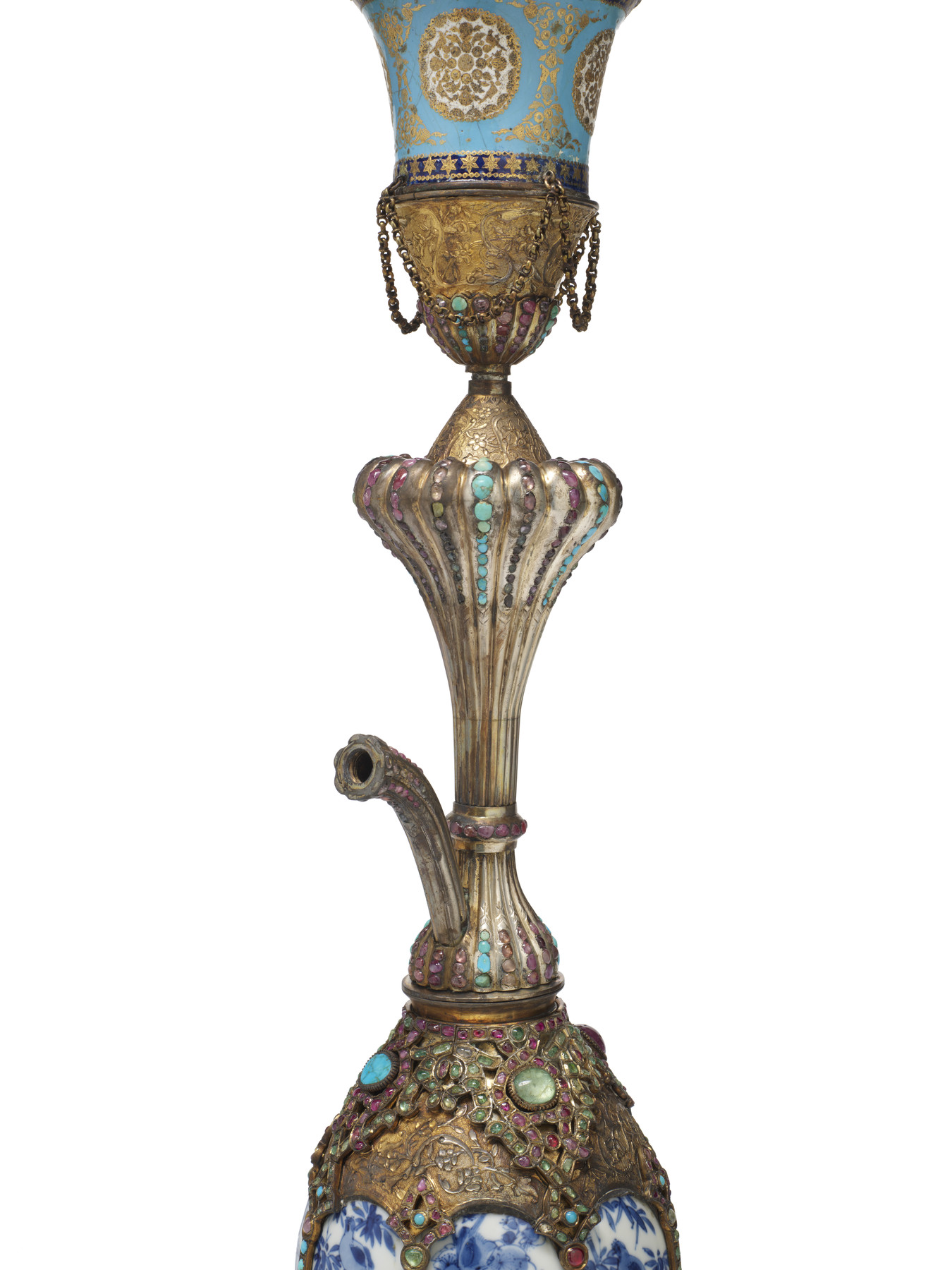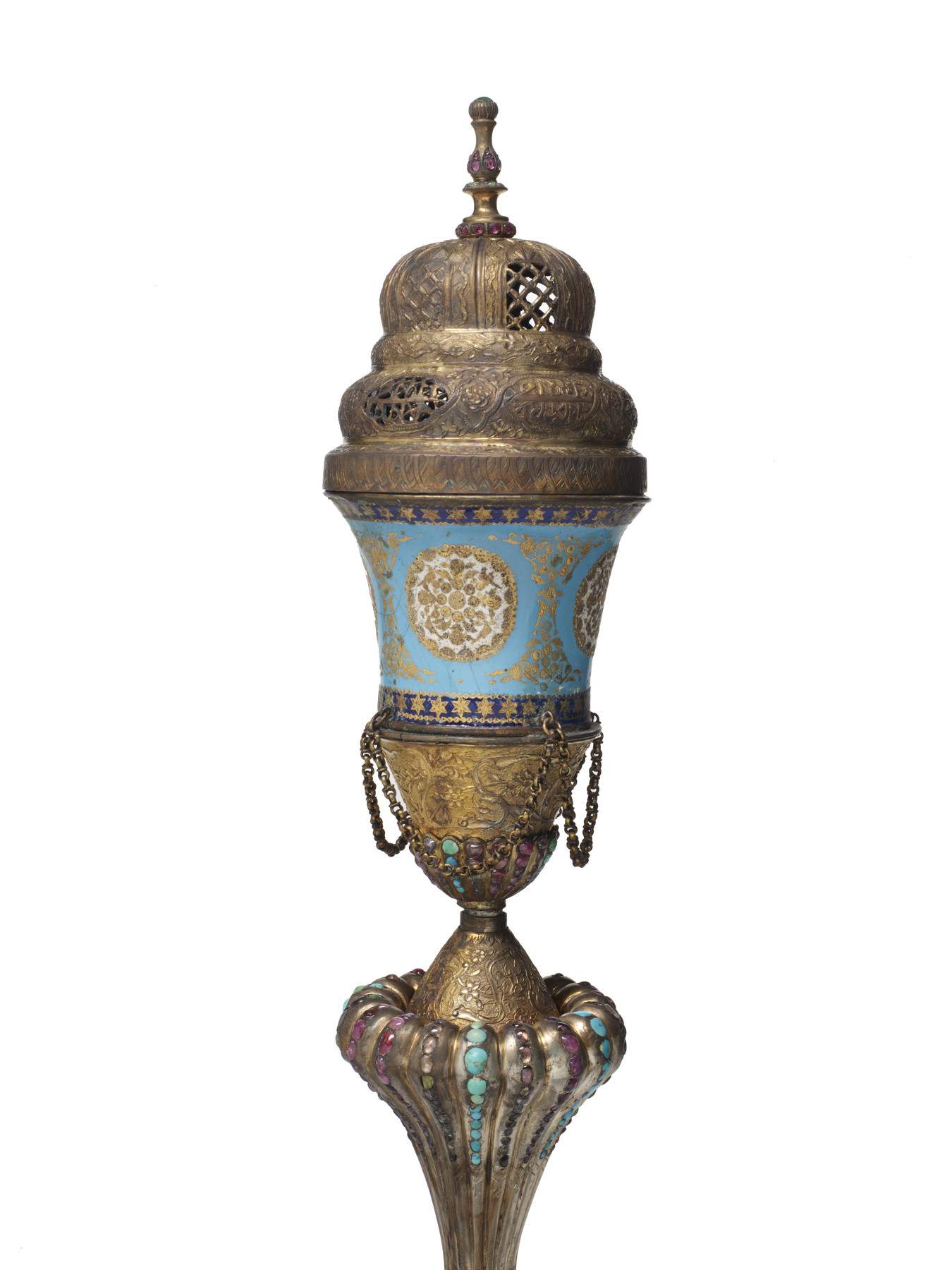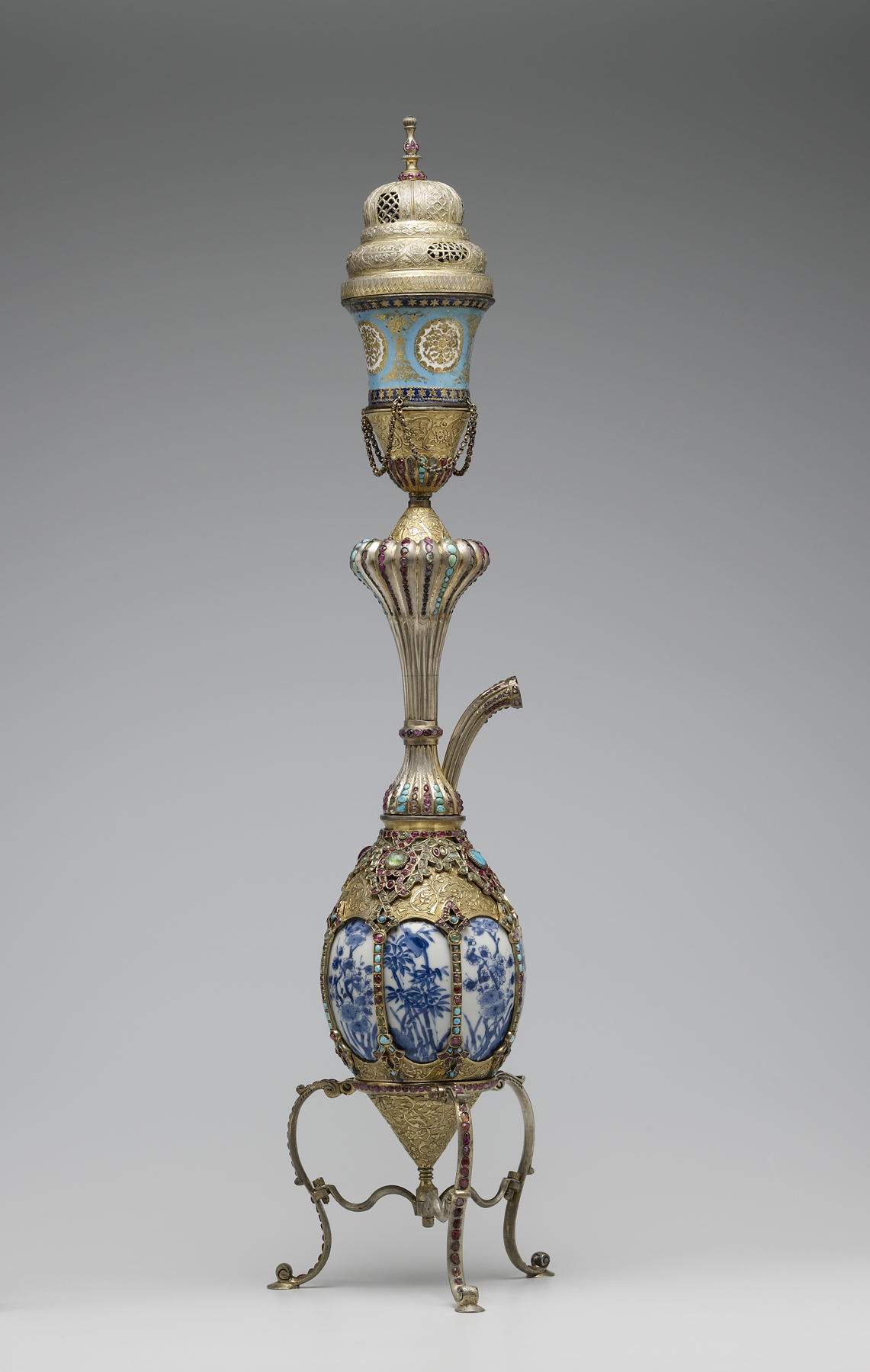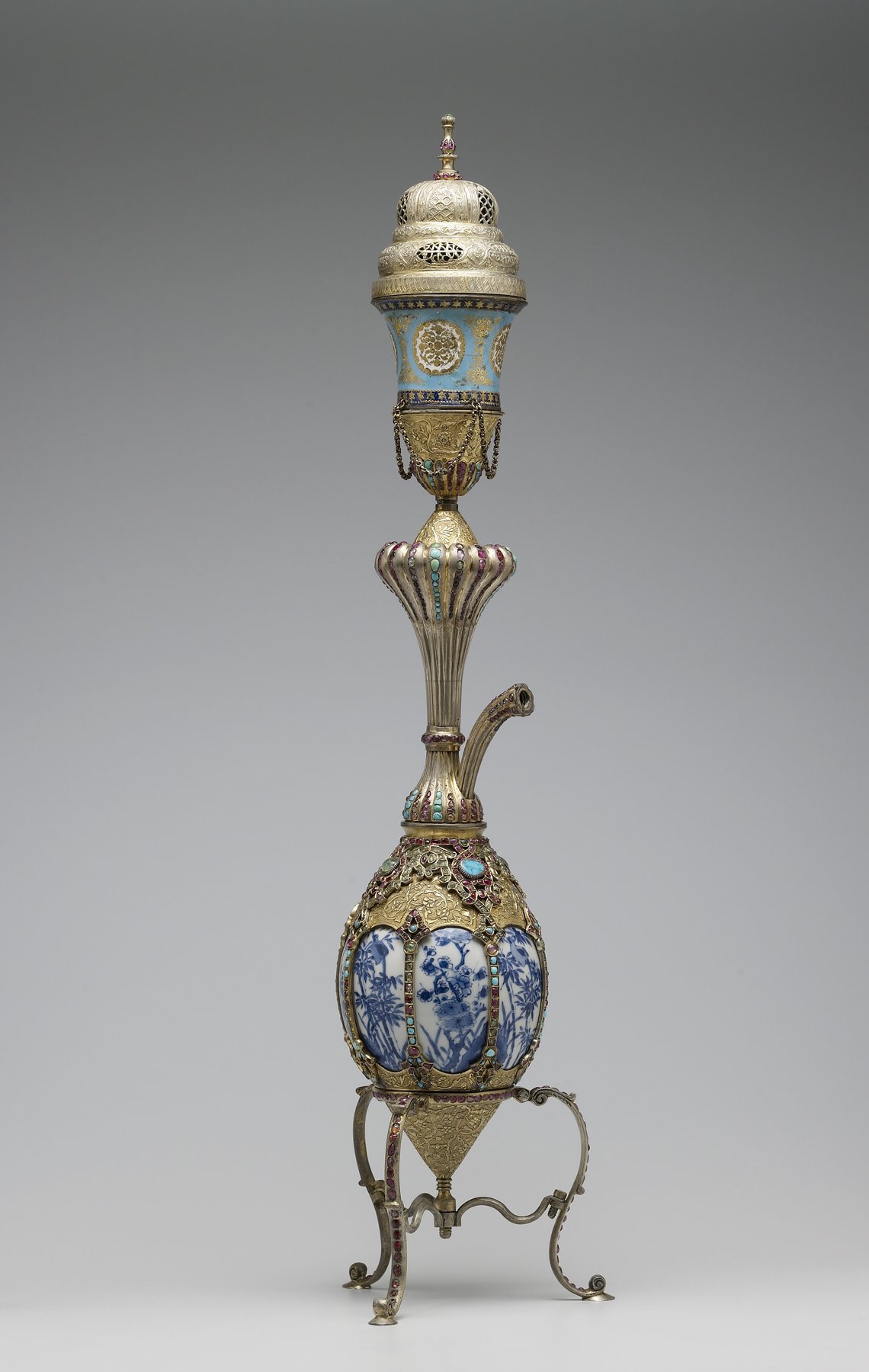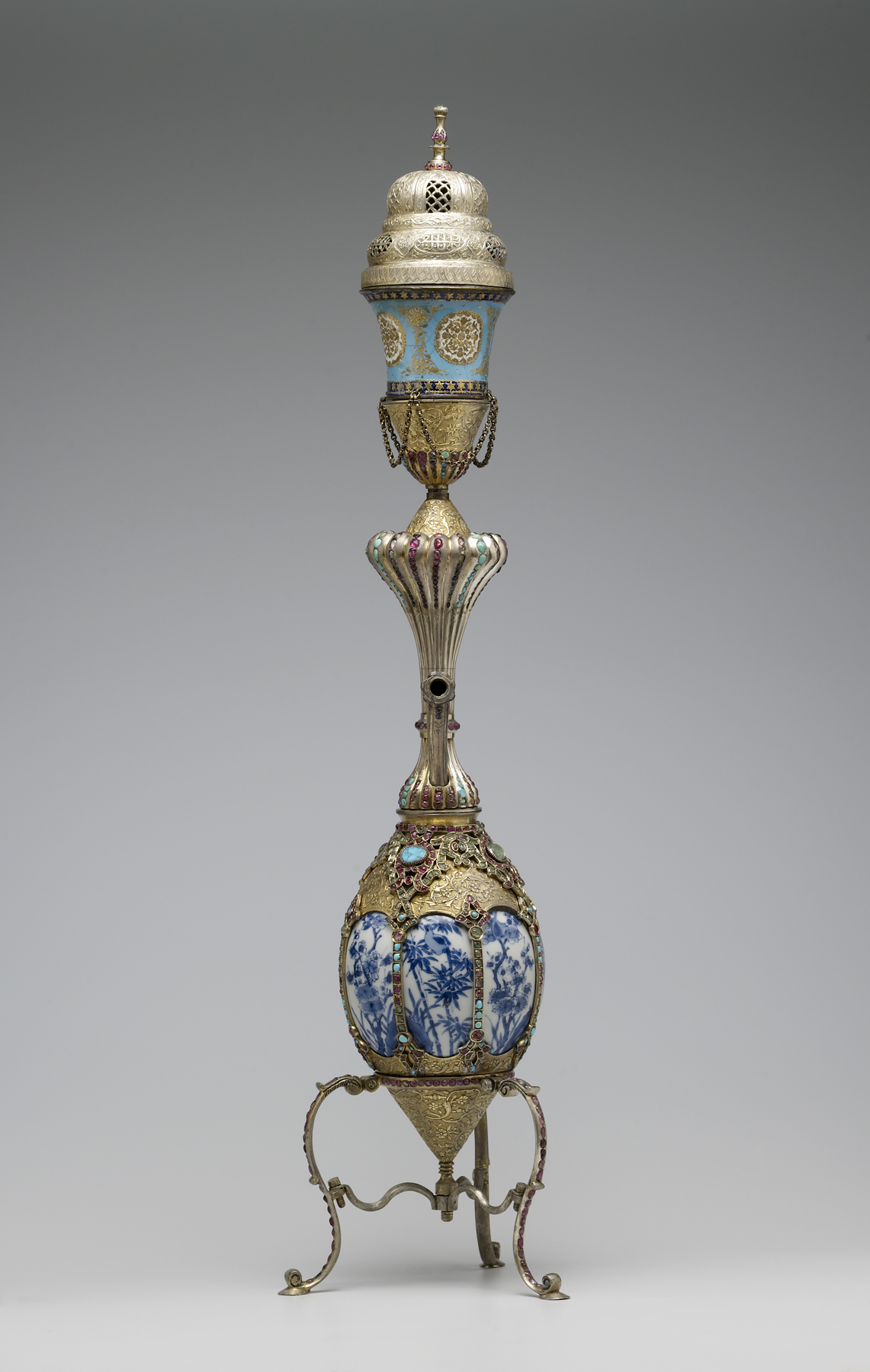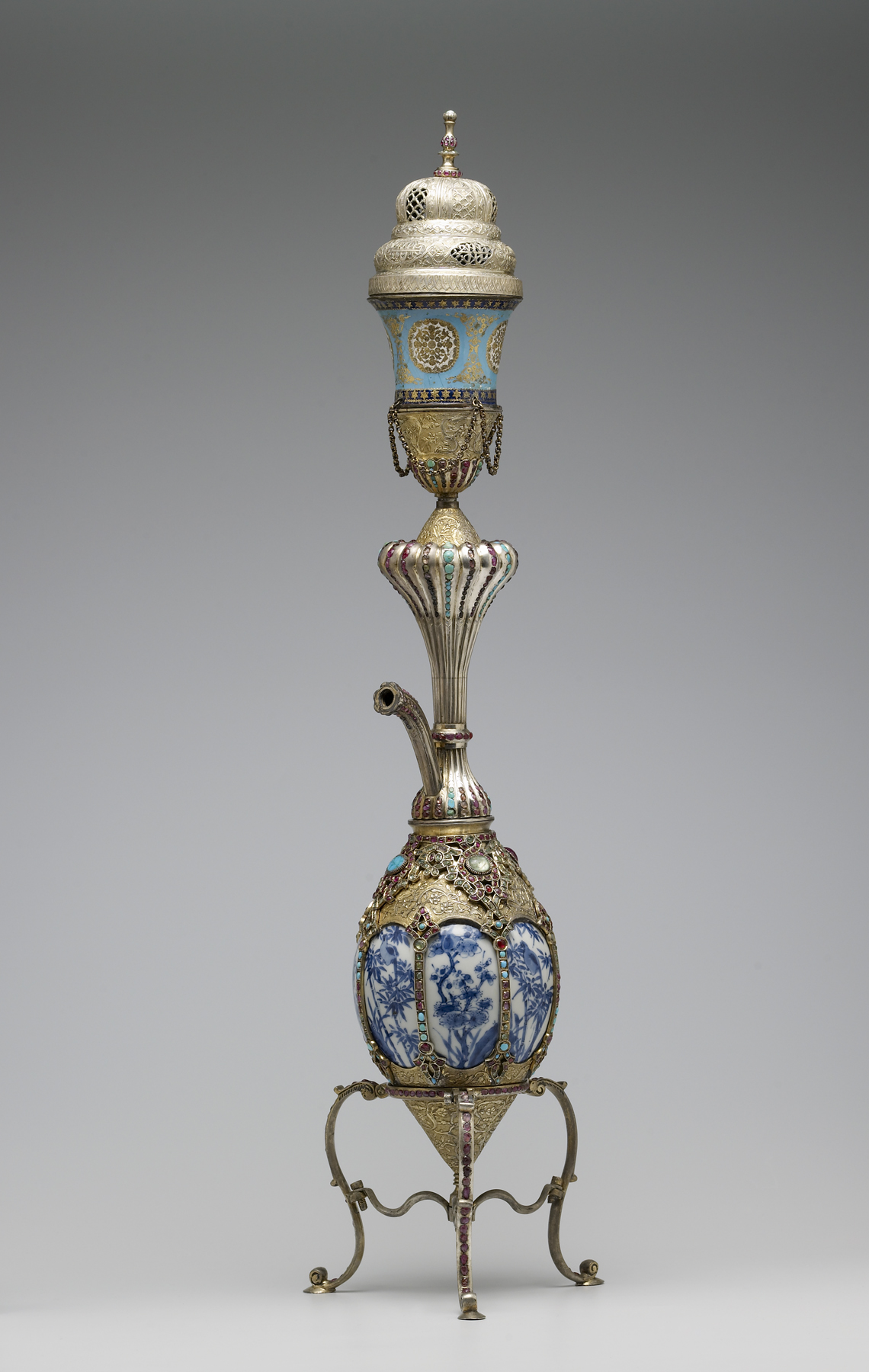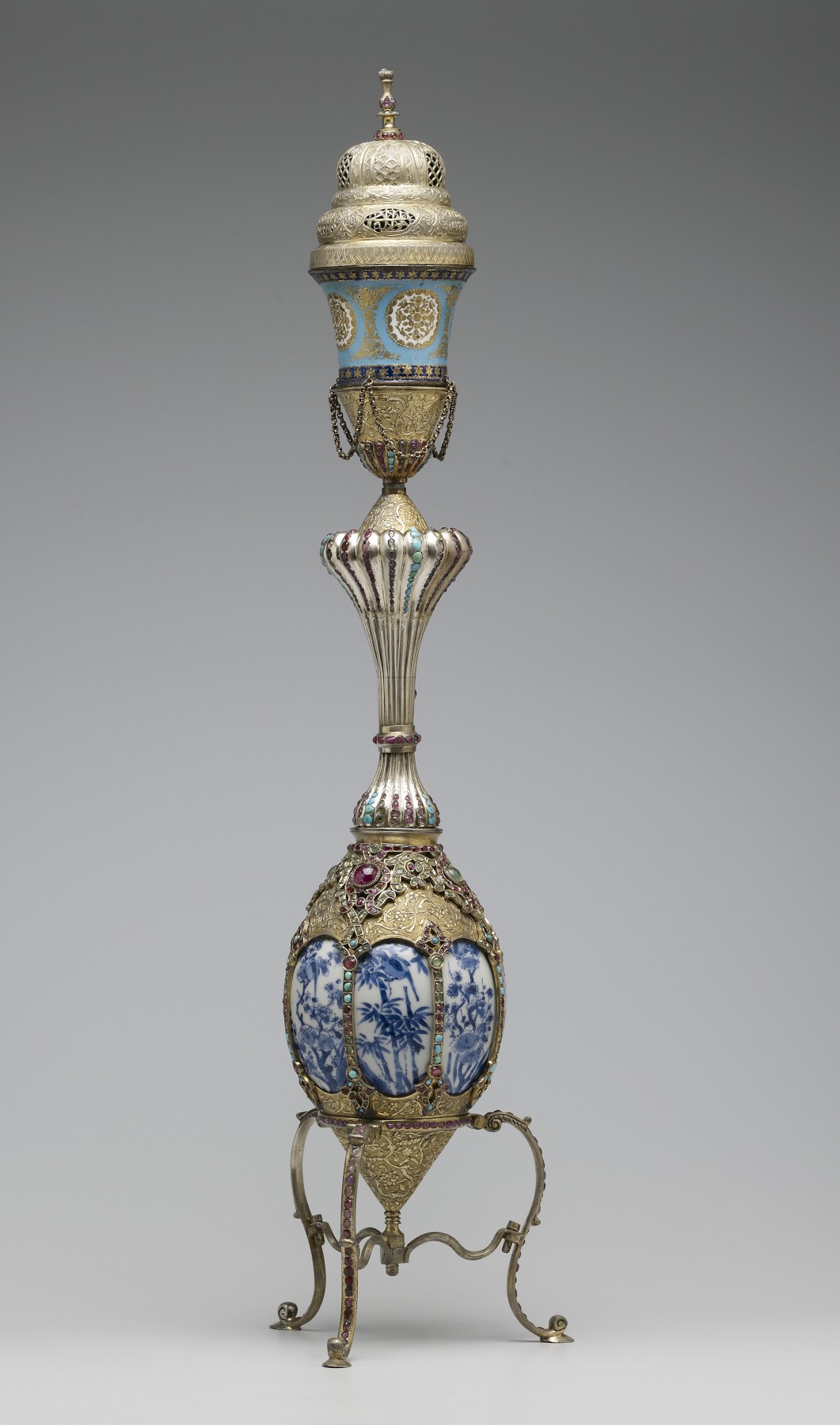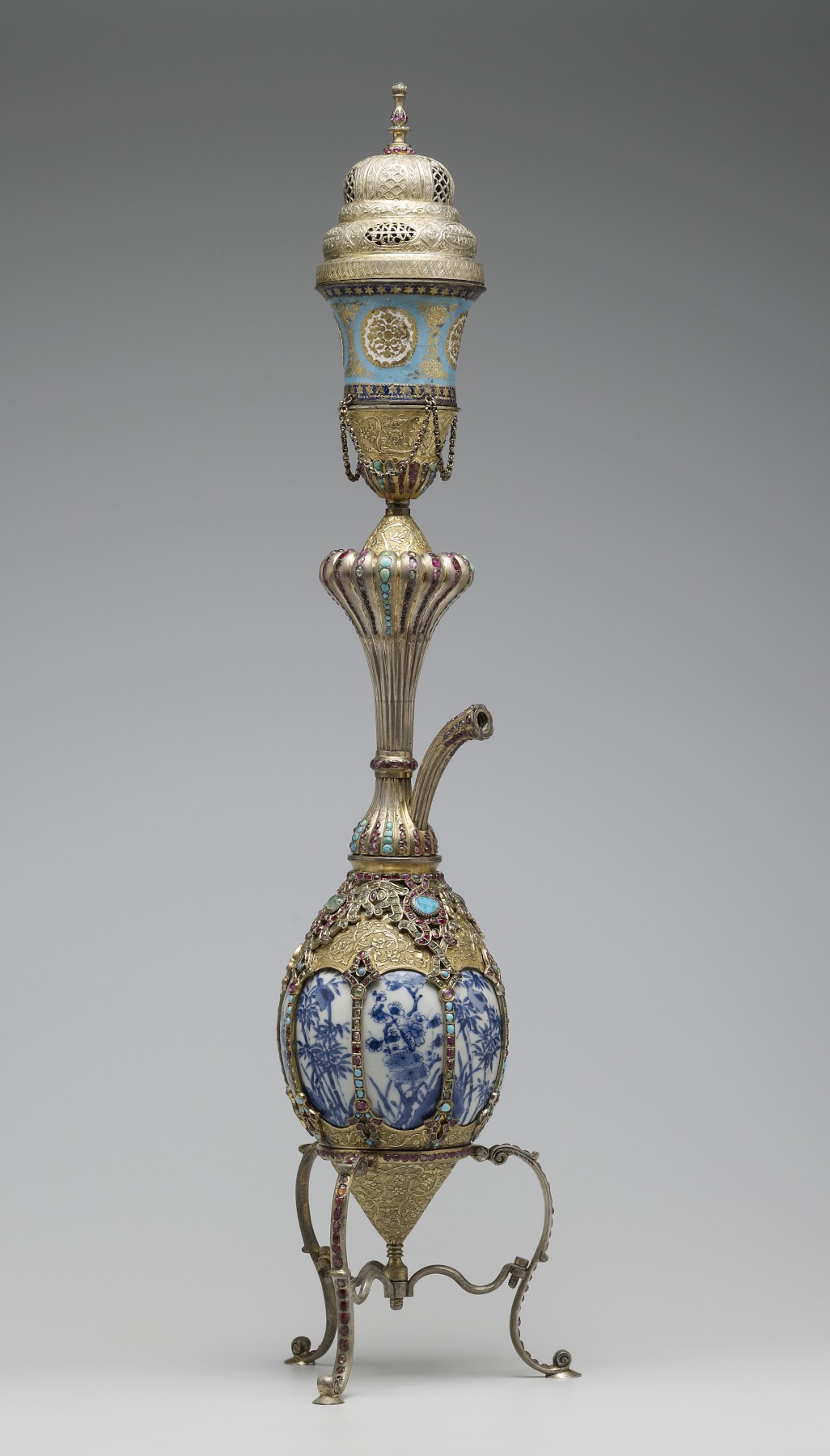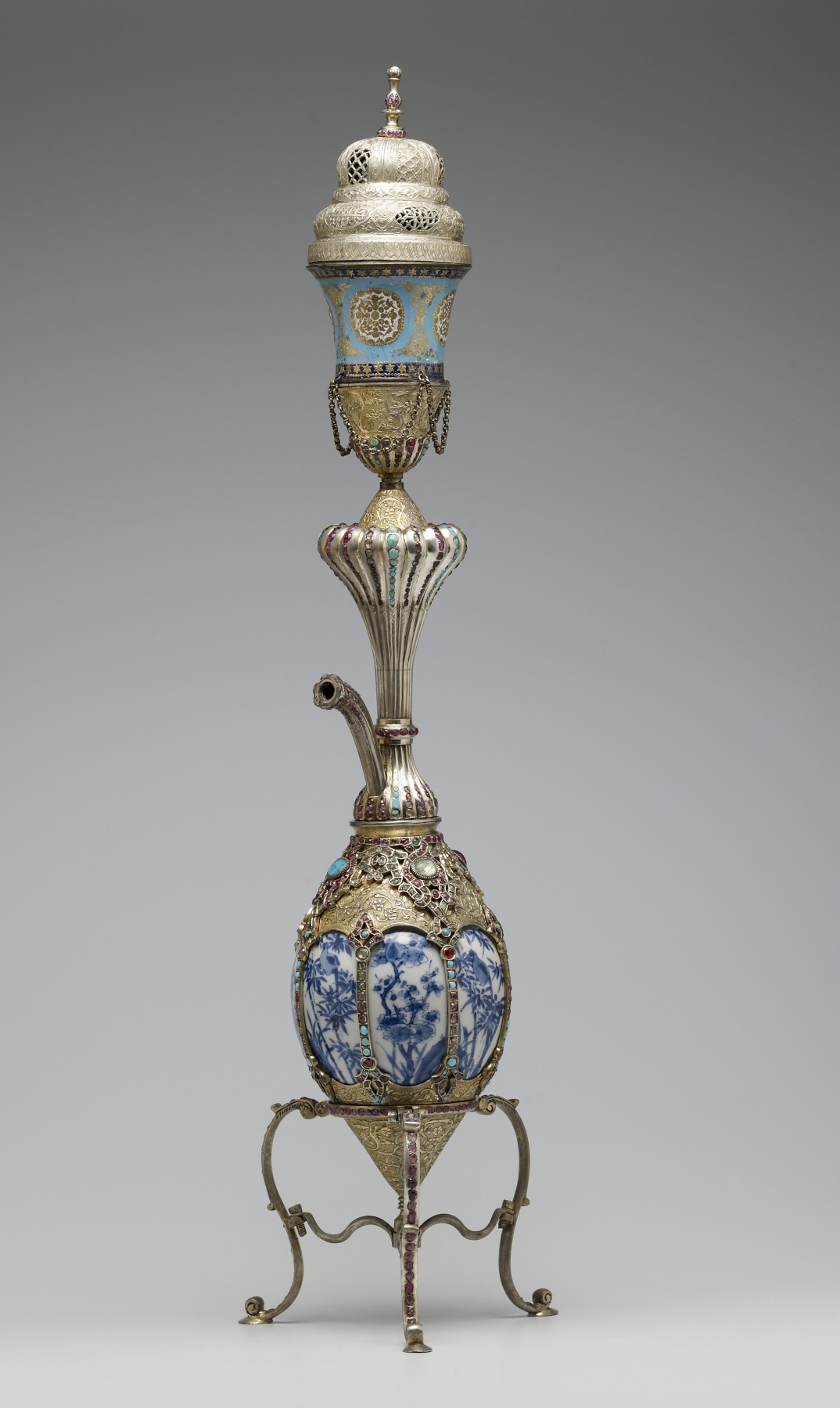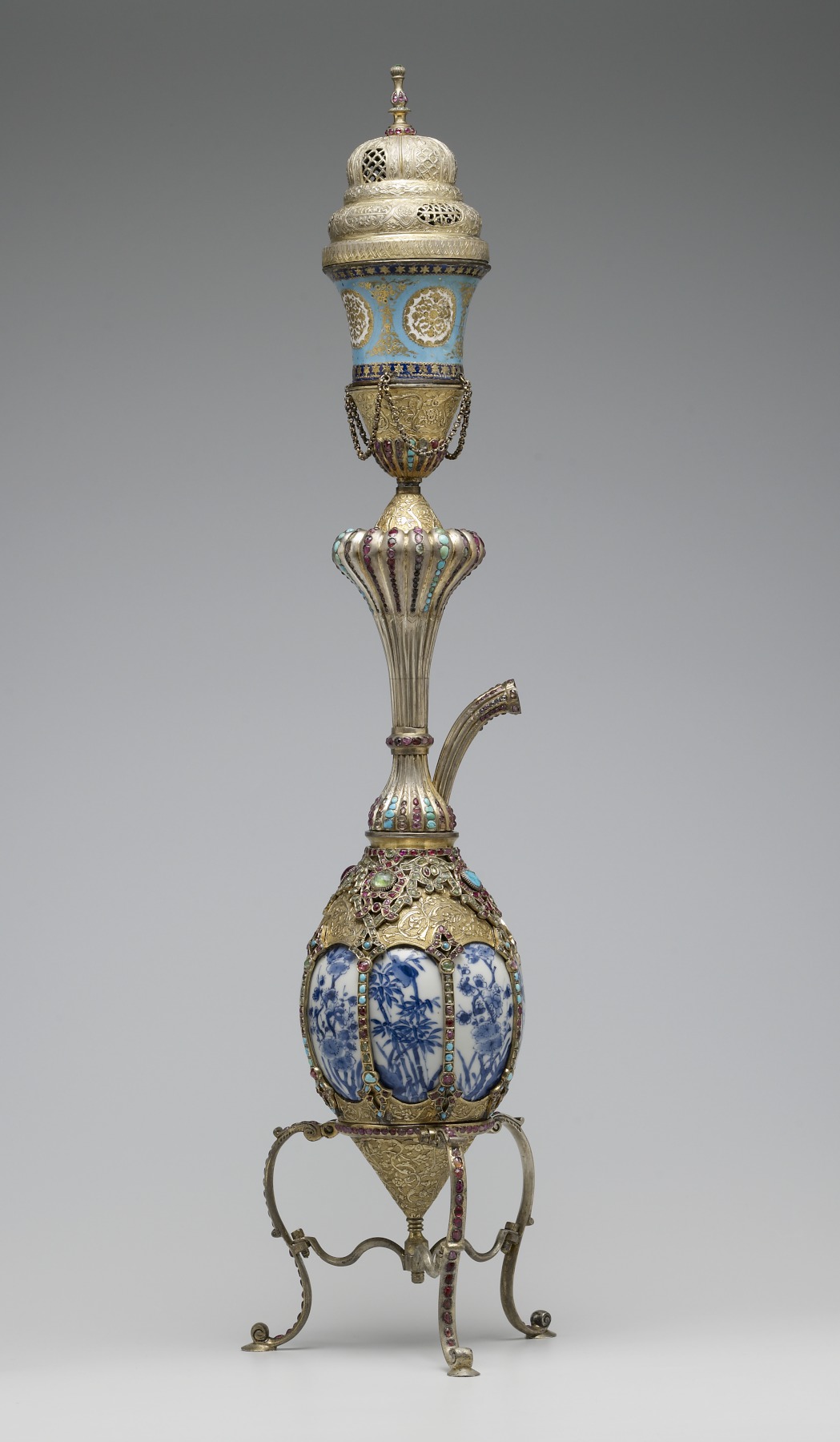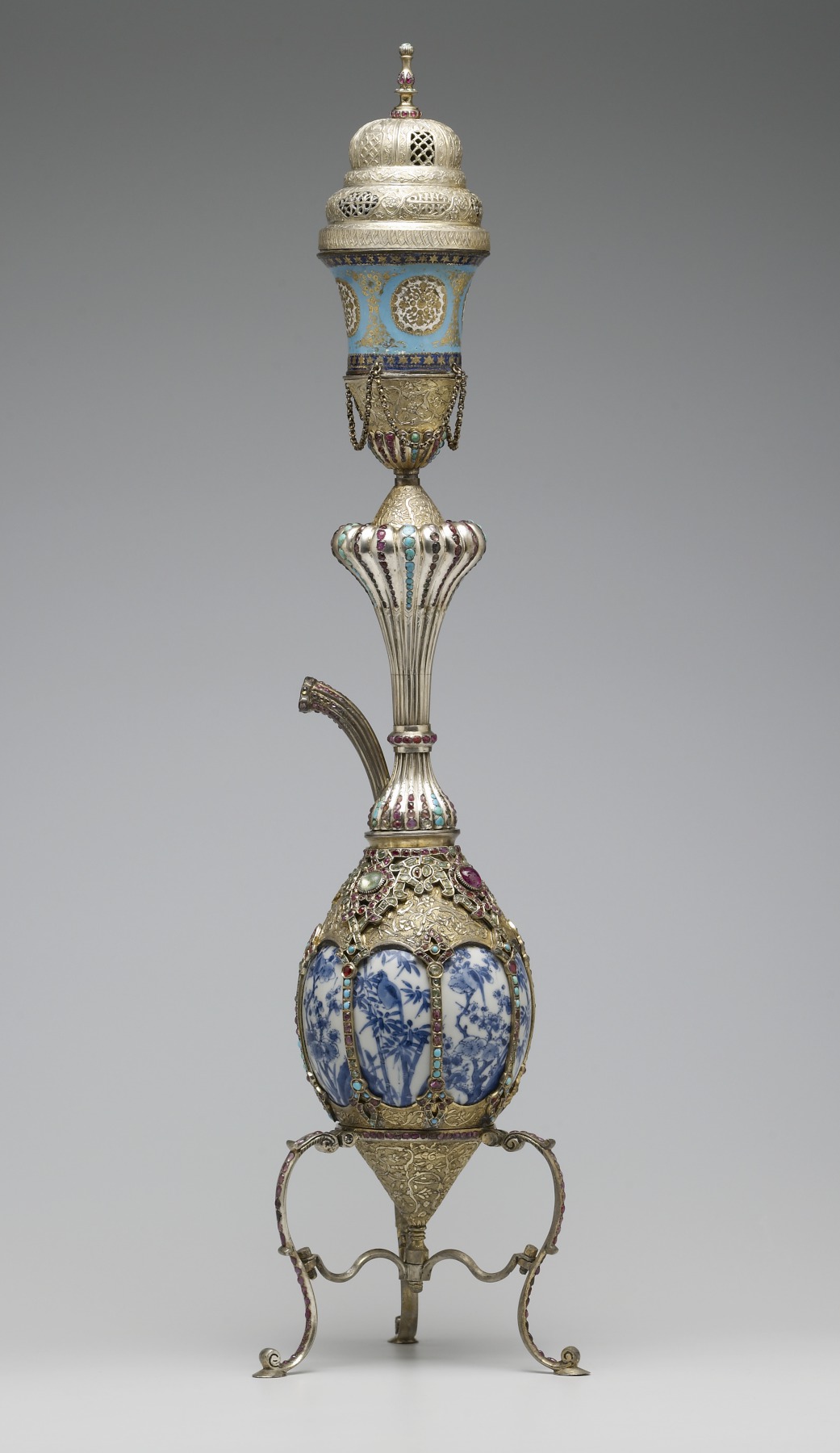Nargile
(Islamic World , China )
Blue-and-white porcelains from China were especially prized in Islamic courts. Such objects were not only collected by Muslim rulers but also refitted or refashioned for new purposes. This nargile, or water pipe for smoking tobacco, incorporates an 18th-century Chinese blue-and-white vessel that was later embellished in the mid-19th century with fittings—including gilded silver, copper alloy, rubies, and emeralds—by artists in the Ottoman Empire. Refitted in this way, the Chinese ceramic vessel would have held water for the smoking process, most likely disregarding the original function of the vessel as a vase or something similar.
Provenance
Provenance (from the French provenir, 'to come from/forth') is the chronology of the ownership, custody, or location of a historical object. Learn more about provenance at the Walters.
R. S. Pardo, Constantinople; purchased by Henry Walters, Baltimore, 1903; by bequest to Walters Art Museum, 1931.
Exhibitions
| 2014-2016 | From Rye to Raphael: The Walters Story. The Walters Art Museum, Baltimore. |
| 1980-1981 | Masterpieces of Chinese Porcelain. The Walters Art Gallery, Baltimore. |
Geographies
Türkiye/Turkey
(Place of Origin)
China (Place of Origin)
Measurements
H with lid: 26 3/16 × W: 6 7/8 × D: 6 5/16 in. (66.5 × 17.5 × 16 cm); Bottle H: 22 5/16 × W: 6 7/8 × D: 6 5/16 in. (56.7 × 17.5 × 16 cm); Lid H: 4 1/16 × Diam: 3 3/8 in. (10.3 × 8.5 cm)
Credit Line
Acquired by Henry Walters, 1903
Accession Number
In libraries, galleries, museums, and archives, an accession number is a unique identifier assigned to each object in the collection.
In libraries, galleries, museums, and archives, an accession number is a unique identifier assigned to each object in the collection.
49.2199


